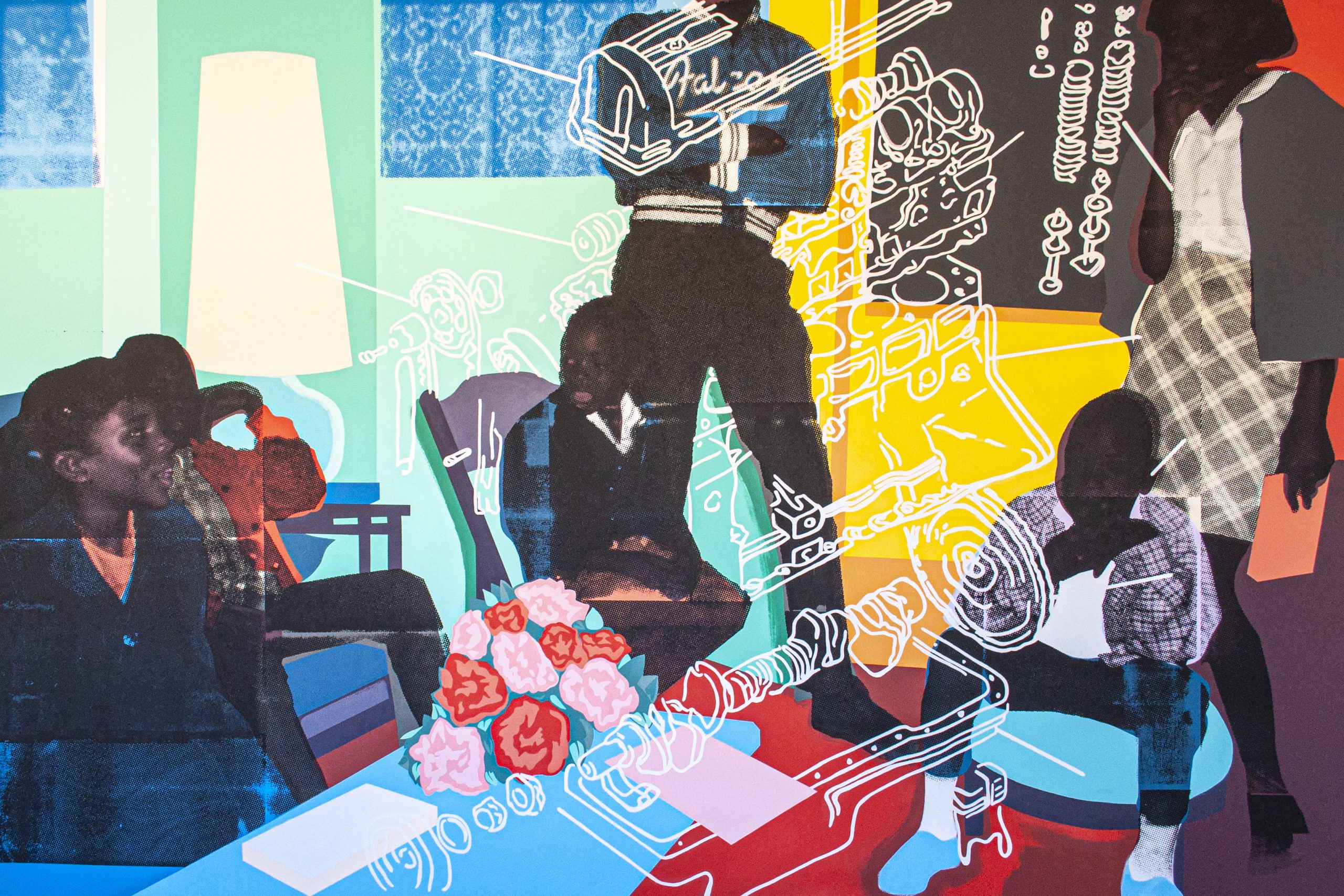
Learning homesteading skills has become a part of Kristopher Wright’s artistic practice.
“It really lights my brain up from a creativity standpoint to be building a small family farm,” the multimedia artist says over a Zoom call from his cabin in the San Luis Valley. “It kind of goes hand in hand with my practice.”
The Denver native and his wife, fellow artist Corianne Wright, moved from the Mile High City to southern Colorado during the pandemic to live more sustainably, but the move also gave the couple a chance to refocus on their individual artistic practices after a half dozen years running creative arts incubator Odessa.
Wright says he and Wells loved showcasing local art and facilitating networking opportunities through Odessa’s Santa Fe Street gallery space, but juggling day jobs plus the gallery left little time for their own creativity.
“2020 created an opportunity where we were like, this is wonderful, but there just needs to be more balance,” Wright says. “We just weren’t in the studio. So that’s what brought us here.”
In the slower pace of “the SLV,” Wright says he was able to focus on finishing what became the 16 works that now hang in the East Gallery of Boulder Museum of Contemporary Art through Feb. 19, 2023. Just As I Am weaves together the disciplines of painting and printmaking to create narratives that evoke a sort of deja vu, like a memory you can’t quite bring into focus but the feelings are as clear as day.
Full of family gatherings like birthday parties, church revivals and backyard barbecues, it’s tempting to see the collection of work in Just As I Am as snapshots from Wright’s own life, but the truth is more nuanced.

‘Dark Was the Night,’ acrylic ink and paint on canvas, 2022
“All of these scenes and compositions that I’m fleshing out in the work are things that have happened to me, whether it’s a memory or an experience, but the people in the works themselves are not always what they seem, or they might not always be who you think they are,” Wright explains. “I’m really playing with these figures as a way to communicate a larger story. I want that kind of ambiguity to create an opportunity for a viewer to imagine themselves in the scene or read into it in a way that maybe I didn’t intend.”
Exhibition curator Pamela Meadows says it’s this ambiguity that drew her to Wright’s work.
“Even though I didn’t know who the figures were, I didn’t really know what the work was about per se, I just felt like he captured a feeling,” Meadows says. “And I kept commenting to him how I felt like I knew the space or I knew the people, and I kept chasing this feeling of comfort or peace looking at his work.”
But Wright keeps the viewer from sinking into pure nostalgia by printing machine diagrams over the subjects of his work, alluding to the internal work each of us undertakes to grow and thrive.

In the piece “Fire in my Bones,” an adult woman sits at a kitchen table with a girl, the child leaning over to blow the candles out on a Nickelodeon-orange cake. Both subjects are ensconced in mechanical diagrams of a combustion engine — the adult more so than the child.
“The reference to the engine is kind of a metaphor for the heart,” Wright says. “Both of those forms, the heart and the engine, have to do with timing, with rhythm, with maintenance or repair. I’m thinking about that all the time: How do we repair ourselves throughout time? How do we put the pieces back together?”
Wright and his wife have found repair in the constant vigilance of life on a ranch.
“I’ve got six chickens, two goats, two puppies, and one dog who thinks he’s a puppy,” Wright says with a laugh. “Between that and doing soil regeneration, planting trees, planting grass, I stay pretty busy. We want to create a place where everybody’s welcome to share this space, to be able to be together and break bread and pick fruits and vegetables from the garden and watch the sunset.”
Meadows argues that Wright creates a similar sense of welcoming in his art.
“I felt really emotionally invested in his work without really knowing a lot about it; I think that’s something that not every artist can do, and he activates that seemingly so easily,” Meadows says. “He has this really quiet way of telling a vibrant story that I hope others get from this exhibition.”














